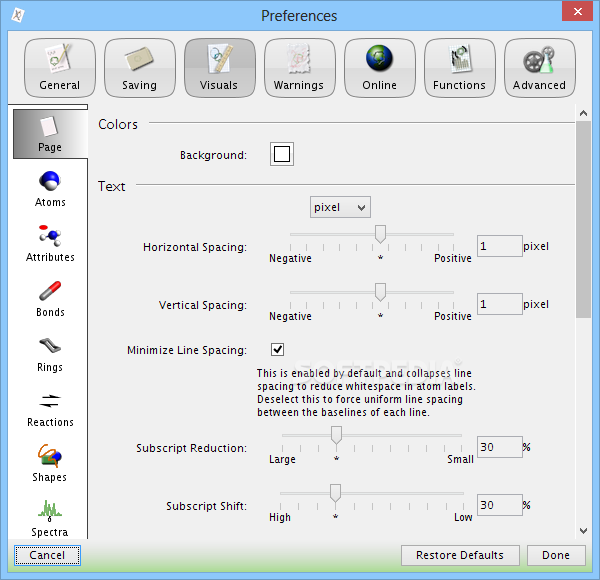

SciFinder n, the newest, most advanced member of the SciFinder ® family, provides scientists access to the latest disclosed research, enabling them to work more productively, creatively and confidently. By streamlining the communication between ChemDoodle and SciFinder n, this integration increases researchers’ efficiency and optimizes the workflow between these popular applications.” “Our focus is to provide the best experience for chemistry researchers.

#Chemdoodle in canvas software
“We are proud to extend our collaboration with CAS to introduce a direct integration of our desktop ChemDoodle software with SciFinder n” said Kevin Theisen, President, iChemLabs, LLC. ChemDoodle has an easy-to-use interface for drawing molecules and reactions and with the ability to read many essential chemistry file formats, it facilitates quick investigation of chemical data across the vast SciFinder n content collection. Starting with ChemDoodle 10, new tools are included for directly querying substances, reactions, references and suppliers in SciFinder n. Built on the trusted CAS content collection, SciFinder n is a new caliber of chemical intelligence with remarkably relevant search, incredible ease of use and answers you can take right to the lab.ĬhemDoodle is a popular chemical drawing desktop application used by thousands of institutions in over 100 countries for creating publication-quality graphics, handling chemistry data and performing advanced cheminformatics functions. The image below shows some examples.Advanced SciFinder n searches are now immediately accessible to ChemDoodle users to increase workflow efficiency.Ĭolumbus, Ohio (December 19, 2019) - CAS, a division of the American Chemical Society, continues its partnership with iChemLabs to optimize the efficiency of chemical structure searching and drawing in SciFinder n using ChemDoodle ®. So while you can create very clear and precise figures for records, you can also create art. You can control the look of the plate through settings, display R f values if chosen, change the solvent front and origin by clicking and dragging them, further change spots by right-clicking on them, etc. I should also note that after a TLC plate has been placed onto the Doodle Board, you may always place it back into the TLC Canvas for further editing by dragging and dropping it on the widget. The controls on the right are for editing the TLC plate and are described above in the list. The gradient styled spots most closely represent actual spots. All of the spots can be initialized as solid, hollow or gradient styled to imitate different appearances. These spot buttons are group buttons and if you click and hold over the button, more options will appear. You can create new lanes by placing spots in between the existing lanes. Once you are satisfied with a location, click to place the spot. Just click on a spot button, then hover over the TLC plate for a preview and R f calculation. These are the compact, expanded, trailing, widened, crescent and custom spots, in that order. The rest of the buttons in that column correspond to spot shapes. The top button is the color of the spots, just click it to choose a different color. The controls on the left are the simplest. There are fourteen buttons associated with the TLC Canvas. Each spot has four control points, except the Custom spot which has eight.

The solvent front and origin can also be displaced with this tool. Their R f value will be displayed while this is occurring. Move spots up and down along their lanes.Adjust the settings for the current TLC plate.Places the current TLC plate onto the Doodle Board.The TLC plate displayed is a standard size, but once placed on the Doodle Board, it can be resized and rotated to any dimension and orientation. All actions and gestures are performed here. Choose the current color of the spots being added.The following image and list will describe the layout of the widget. UPDATE: ChemDoodle 2 was released on 5/27/09. This widget allows you to digitally reproduce experimental Thin Layer Chromatography (TLC) plates with near photorealism. One of the new widgets incorporated into ChemDoodle 2 is the new TLC Canvas.


 0 kommentar(er)
0 kommentar(er)
